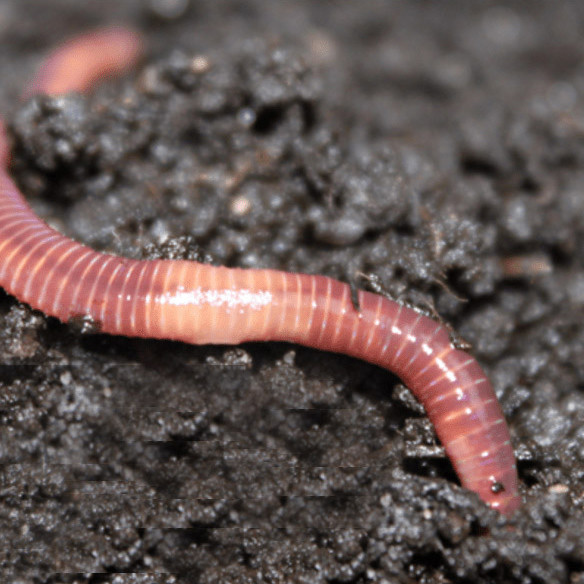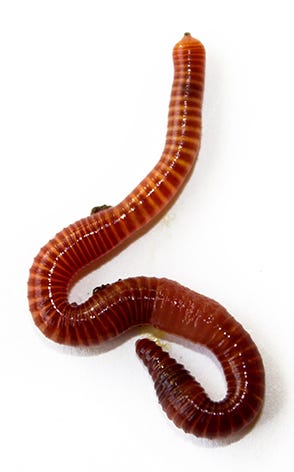Nutrient-rich red worms: Perfect for compost bins
Wiki Article
Transform Your Garden With Red Wigglers: Advice
Red wigglers are not simply a curiosity for garden compost fanatics; they are critical agents of makeover for any yard. By establishing a fundamental worm bin and understanding the nutritional requirements of these exceptional creatures, gardeners can considerably boost dirt high quality and plant health and wellness. The procedure of converting organic waste right into rich, abundant spreadings is both straightforward and fulfilling. The true potential of red wigglers goes past mere composting. Checking out the nuances of their treatment and the varied applications of their byproducts can open even higher benefits for your horticulture endeavors.
Advantages of Red Wigglers
Red wigglers, medically recognized as Eisenia fetida, are often hailed as nature's composting champions. These remarkable worms serve several essential advantages that can significantly enhance garden health and productivity.
Another noteworthy benefit of red wigglers is their capability to decrease waste. By composting organic products that would certainly otherwise add to landfill waste, they play a crucial function in sustainable horticulture methods. Finally, incorporating these worms right into your gardening regimen can cause increased returns, much healthier plants, and a much more lively garden atmosphere, making them vital allies for gardeners seeking to improve their ecological footprint.
Establishing a Worm Bin
Creating a worm container is a vital step for any individual seeking to harness the benefits of red wigglers in their horticulture efforts. An ideal worm bin can be made from different materials, consisting of plastic containers, wooden pet crates, or readily available worm bins. The initial consideration is size; a container that goes to the very least 2 feet large, 3 feet long, and 1 foot deep is typically perfect for a small to tool variety of worms.It's crucial to develop a bed linen layer, making use of materials such as shredded paper, cardboard, or coconut coir to provide a comfortable setting for the worms. The bed linens ought to be damp yet not soaked, looking like a wet sponge - red worms.
Place the container in a location that preserves a regular temperature, ideally between 55 ° F and 77 ° F. Avoid direct sunlight or extreme cold, as these conditions can hurt the worms. As soon as the container is established, enable the bed linen to opt for a couple of days prior to presenting the red wigglers, ensuring they have a successful atmosphere in which to thrive.
Feeding Your Red Wigglers
Once the worm bin is established and the red wigglers are presented, appropriate feeding ends up being key to maintaining a healthy and balanced worm population. Red wigglers prosper on a varied diet plan, mainly being composed of cooking area scraps and natural products.When presenting food, slice the scraps right into smaller items to promote quicker usage. Additionally, hide the food under a layer of bed linen product to avoid fruit flies and various other nuisances. Display the feeding regularity; a basic guideline is to give food every 1-2 weeks, relying on the variety of worms and the quantity of food waste generated.

Collecting Worm Spreadings
How can you tell when it's time to collect worm castings from your bin? The readiness of worm castings is suggested by a couple of key signs. First, the product in the container must appear dark, crumbly, and rich in structure, looking like a fine dirt. Furthermore, the initial food scraps must be significantly damaged down or virtually indistinguishable, indicating that the worms have properly refined them.An additional indication is the reduction in worm task; as the spreadings accumulate, worms often tend to move towards fresher food resources. If you discover a decline in worm motion and the presence of castings at the bottom of the container, it's a clear signal that harvesting schedules.
To harvest, gently dig the spreadings, taking care to lessen disturbance to the worms. A preferred approach includes separating the spreadings making use of light; worms have a tendency to tunnel away from the light, enabling you to accumulate the castings extra quickly.
Collecting regularly, about every three to six months, makes certain a constant supply of this nutrient-rich change for your horticulture endeavors. Keep in mind, the quality of your spreadings straight affects the health of your plants.
Utilizing Spreadings in Your Yard
(red wiggler worms for sale)Making use of worm castings in your garden can dramatically enhance soil health and plant growth - red worms. These nutrient-rich organic fertilizers give necessary macro and micronutrients, boosting the general fertility of your soil. By incorporating worm castings into your yard beds, you can advertise useful microbial activity, which assists in nutrient accessibility and improves soil structureTo utilize worm spreadings successfully, blend them into the leading few inches of dirt before growing. This guarantees that nutrients are readily obtainable to your plants. Additionally, you can create a nutrient-dense fluid plant food by steeping worm spreadings in water for a week, then using the resulting "worm tea" directly to your plants. This approach not just supplies immediate nutrients yet likewise encourages healthy origin growth.
Worm castings also improve dampness retention within the dirt, reducing the demand for frequent watering. Their all-natural pH equilibrium makes them appropriate for numerous plant types, from vegetables to ornamentals. Regularly integrating worm castings right into your horticulture regimen can result in durable plant growth, increased returns, and a general healthier yard ecological community. Welcome the advantages of worm spreadings for a growing and lasting yard.
Final Thought
Integrating red wigglers into garden practices offers substantial advantages, consisting of improved dirt fertility and boosted plant wellness. By developing a worm container, supplying proper food, and frequently gathering nutrient-rich spreadings, garden enthusiasts can promote a lasting environment. The usage of worm spreadings and "worm tea" better adds to moisture retention and nutrient schedule in the soil. Inevitably, the combination of red wigglers assists in an effective and eco-friendly strategy to horticulture, advertising general environmental balance.Report this wiki page